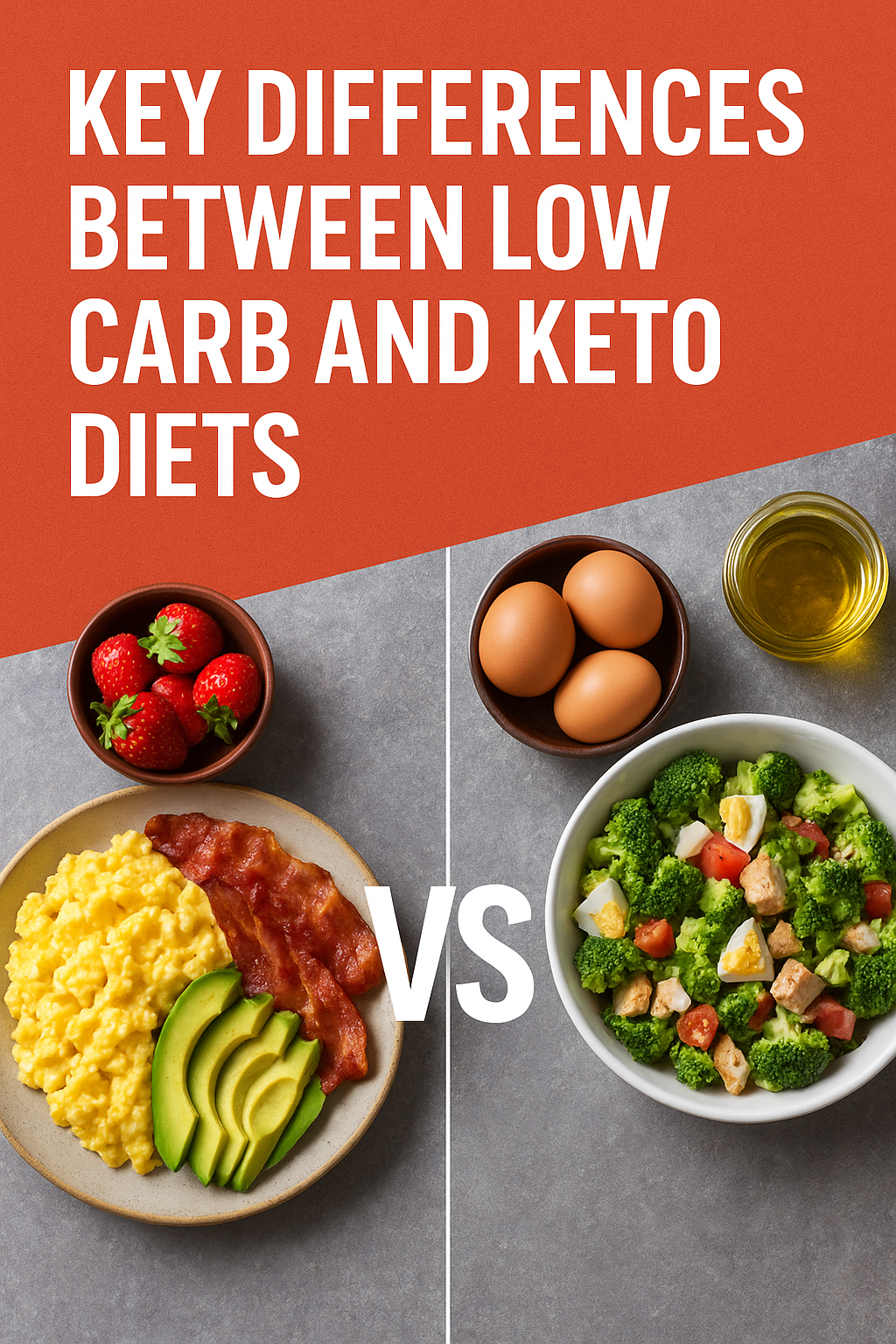Key Differences Between Low-Carb and Keto Diets

If you’ve never tried a carbohydrate-restricted eating plan, the terms “low-carb” and “keto” can sound interchangeable. Both cut carbs, but they work in different ways and deliver distinct results. This guide will walk you through what each diet is, how it works, what goals you can achieve, and how to measure your progress.
What Are Low-Carb and Keto Diets?
A low-carb diet limits carbohydrates—often to 10–30% of your daily calories, or roughly 50–150 grams per day—while encouraging more protein and healthy fats. It doesn’t require you to hit specific fat or protein ratios; the focus is simply on reducing carb sources like grains, sugar, and starchy vegetables.
The ketogenic (keto) diet is a very low-carb, high-fat regimen designed to bring your body into a state of ketosis. Ketosis occurs when carb intake falls below about 50 grams per day (often under 10% of calories), protein is kept moderate, and fat makes up roughly 70–80% of calories. In ketosis, your liver produces ketones from fat, which your body then uses as its primary fuel source instead of glucose.
How They Work
On a low-carb diet, reducing carbs lowers insulin levels, which can help moderate blood sugar and reduce appetite. You burn more fat over time, but you may not maintain full ketosis every day.
With keto, by strictly limiting carbs and increasing fat, your body shifts into ketosis within a few days. In this state, fat becomes the main energy source, and many people report steadier energy, reduced cravings, and faster fat loss compared to more moderate carb restriction.
Benefits of Low-Carb vs. Keto
Benefits of Low-Carb
- More flexible food choices compared to keto.
- Easier for beginners to sustain long-term.
- Supports gradual weight loss and improved blood sugar control.
Benefits of Keto
- Rapid weight loss, especially in the first few months.
- Greater appetite suppression and satiety.
- May improve mental clarity and focus due to ketone production.
- Potential therapeutic benefits for epilepsy, metabolic syndrome, and type 2 diabetes.
Challenges of Each Approach
Challenges of Low-Carb
- May not trigger ketosis, so results can be slower.
- Can lead to carb creep (eating more carbs over time).
Challenges of Keto
- More restrictive and harder to follow socially.
- Requires careful tracking of macros (carbs, fats, protein).
- May cause temporary “keto flu” during the first week of adaptation.
Goals and Measurable Outcomes
- Weight loss: Low-carb diets have been linked to significant weight loss and improved blood sugar control, especially in the first 6 months. Keto often accelerates early weight loss—studies show 5–10% body-weight reduction within 3–6 months when maintained correctly.
- Blood sugar and insulin control: Both approaches lower insulin levels. Keto can produce larger reductions in fasting blood sugar and HbA1c in people with type 2 diabetes, due to sustained ketosis.
- Appetite and satiety: Higher protein and fat intake tend to promote fullness. Keto’s high-fat focus often results in even greater appetite suppression, helping some people eat fewer calories without feeling hungry.
- Cognitive and metabolic benefits: Ketones have been associated with improved mental clarity, reduced inflammation, and potential neuroprotective effects. While less dramatic, low-carb plans still offer many of these benefits through reduced sugar swings.
Comparison Table
| Feature | Low-Carb Diet | Keto Diet |
|---|---|---|
| Carb Intake | 50–150 g/day (10–30% of calories) | < 50 g/day (often < 10% of calories) |
| Fat Intake | Not specified, moderate to high | 70–80% of calories |
| Protein Intake | Moderate to high, no strict limit | Moderate (15–20% of calories) |
| Ketosis | Not required | Primary goal |
| Flexibility | More flexible food choices | More restrictive, fewer carb options |
| Ideal for | General weight loss, blood sugar control | Rapid weight loss, therapeutic uses (e.g., epilepsy) |
Which Diet Is Easier to Follow?
If flexibility and sustainability are your priorities, a low-carb diet may be the better fit. It allows for a wider range of foods and is less socially restrictive. However, if your goal is rapid fat loss or targeted therapeutic benefits, keto may provide stronger results—at the cost of stricter food rules.
